From Trails to Transformation
GHE Aug 11, 2025
Sustaining Culture and Livelihoods
The Eri Silk Initiative in Meghalaya’s Garo Hills
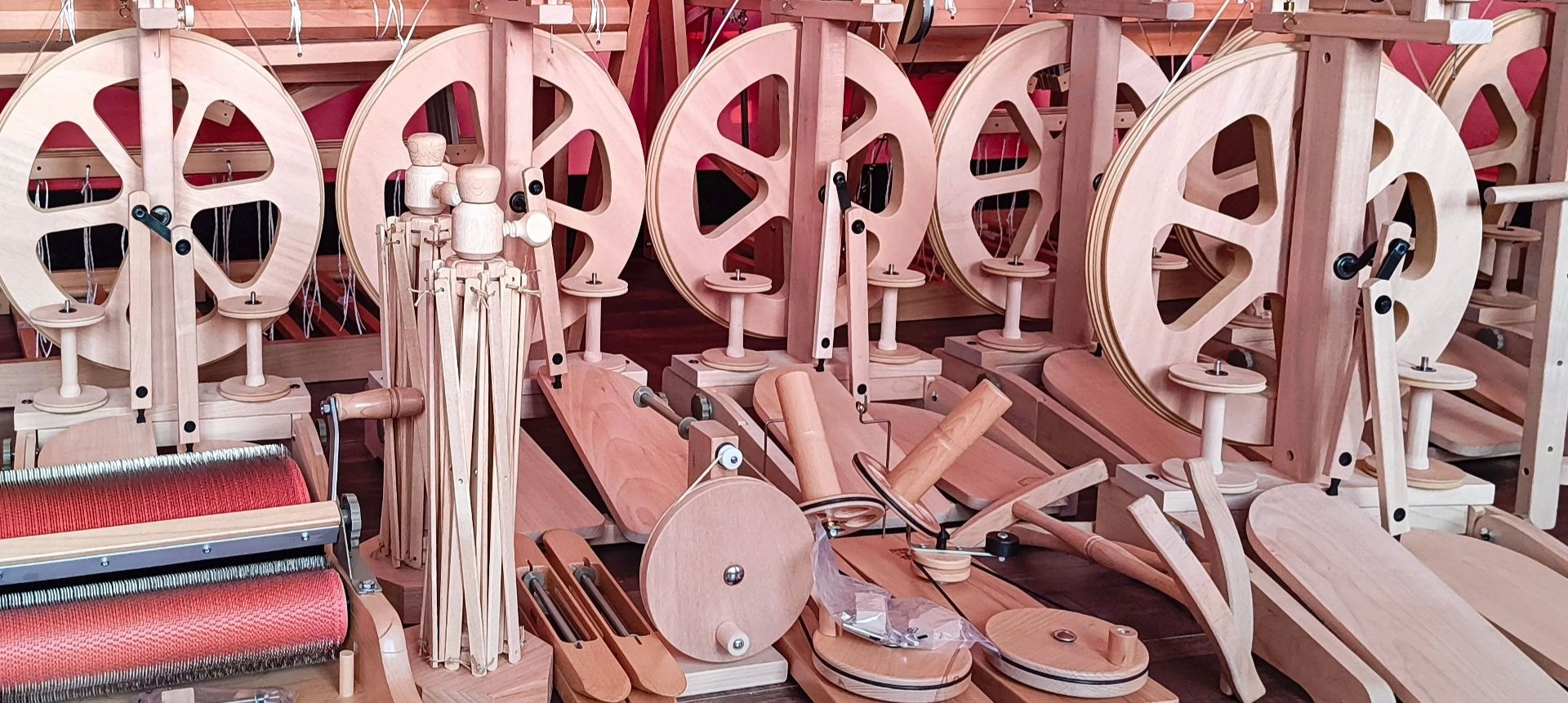
Nestled in the breathtaking landscapes of Meghalaya’s Garo Hills, a unique tradition thrives the weaving of Eri Silk, called “peace silk.” This exquisite fabric reflects a beautiful harmony between nature, culture and ethical craftsmanship with generations of women carrying forward an ancient art that is as much about heritage as it is about livelihood.
The Eri Silk Initiative in Meghalaya’s Garo Hills aims for the socio-economic empowerment of women through sustainable practices. The vision focuses on uplifting women by promoting livelihoods and engaging them in meaningful activities within Self Help Group (SHG) platforms. The mission is to harness available resources to create opportunities for women while preserving the region’s unique cultural heritage associated with Eri Silk. The initiative’s objectives are centered around generating employment for group members by creating quality products that meet market demands. It seeks to ensure that traditional Eri Silk weaving and natural dyeing practices are not only preserved but also promoted as a significant aspect of Meghalaya’s identity.
By combining such efforts, the initiative aims to empower women, enrich their livelihoods and foster a sense of community and self-confidence. Each thread woven tells a story of resilience and strength, ensuring that the legacy of Eri Silk continues to thrive while enhancing the socio- economic landscape for women in the Garo Hills.
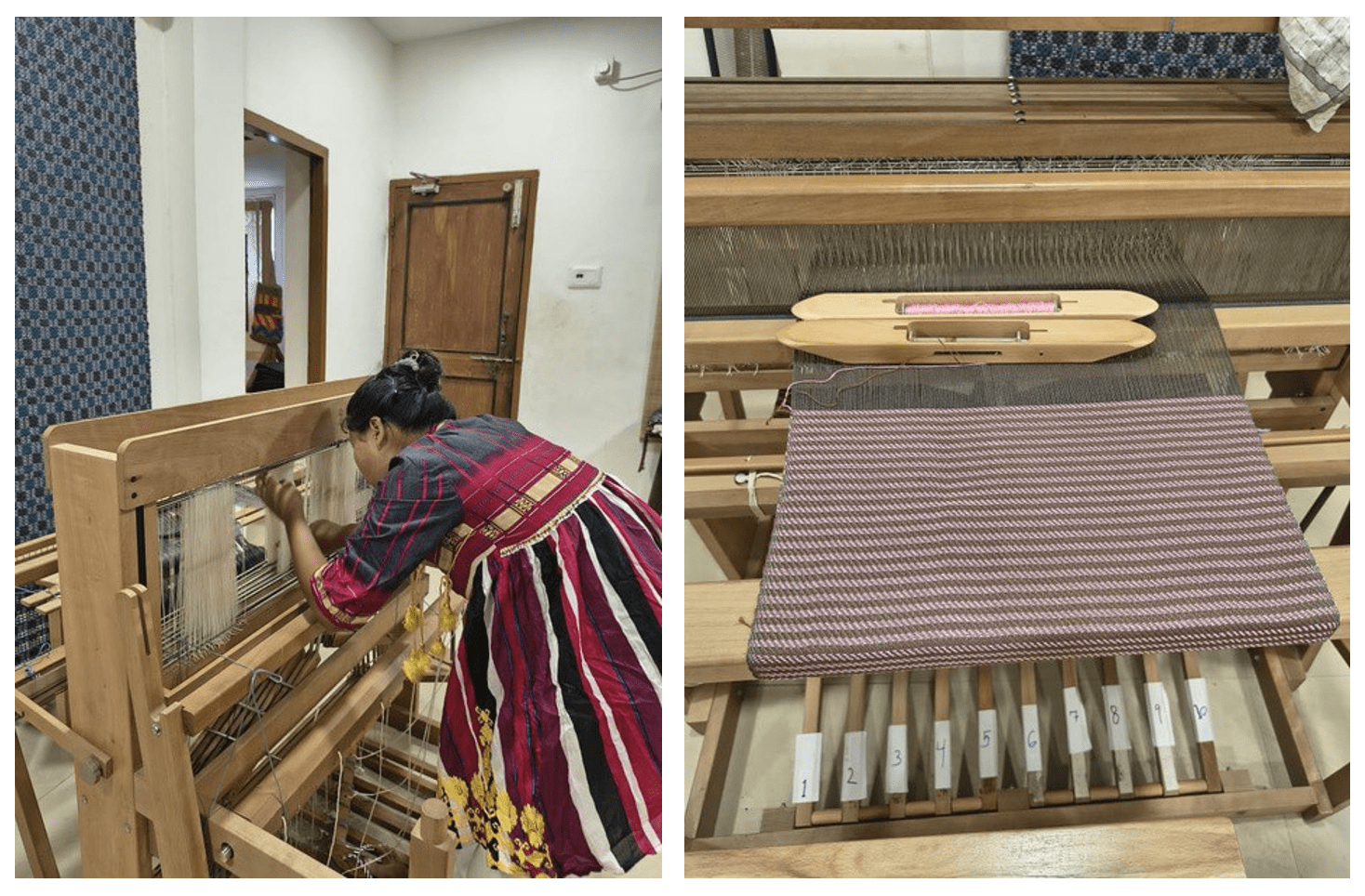
What makes Eri Silk Special!
Traditions of Peace and Sustainability
Eri Silk is unlike conventional silk. Known affectionately as peace silk, it embraces ahimsa, the principle of non-violence. The Eri worm, native to Meghalaya’s forests, feeds gently on castor leaves and naturally leaves its cocoon behind, allowing the silk fibers to be harvested without harm. This mindful process honors nature and reflects the deep respect for the environment that Meghalayan culture cherishes.
Rooted in history as far back as 2500 BCE, Eri Silk weaving is much more than producing fabric. Women spin luminous silk yarn by hand and dye it using natural colors from plants and minerals turmeric gold, clay red, leafy green, bringing colors of nature to life in their textiles. This process weaves tradition, culture and sustainability into every thread.
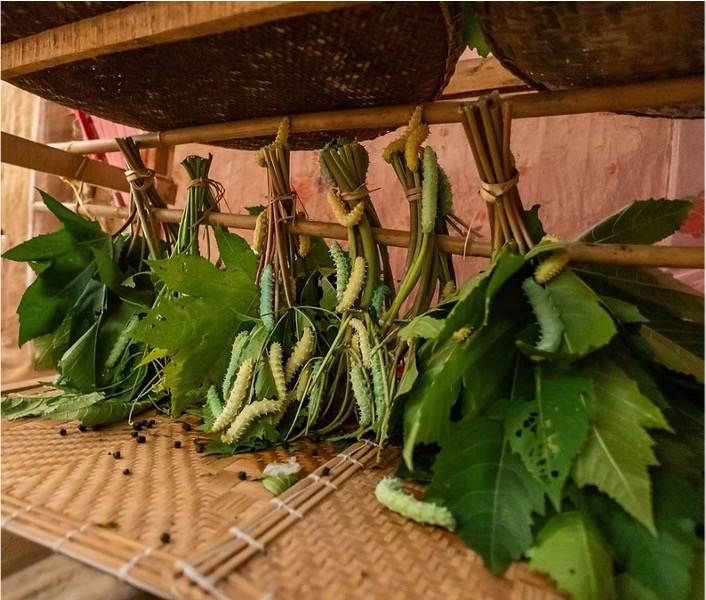
Common Facility Centre (CFC)
Enhancing Skills Through Collaboration in Meghalaya
Common Facility Centre (CFC) is a transformative space for women artisans working with Eri Silk, addressing long standing challenges such as limited market access, inconsistent quality and the absence of proper equipment. Bringing together two dedicated Self-Help Groups, one specialising in spinning Eri cocoons into fine yarn and the other in weaving exquisite fabrics, the CFC offers shared infrastructure that individual artisans could rarely afford on their own. Inside its modest yet well- equipped space, women will have access to spinning wheels, reeling machines, natural dyeing stations using turmeric, sturdy handlooms for weaving, organised storage facilities and dedicated work areas for finishing and packaging products. More than just providing tools, the CFC functions as a learning hub where regular hands on training helps women refine their spinning and weaving skills, master natural dyeing techniques, develop new designs, maintain strict quality standards and understand business essentials such as pricing, branding and market linkages. This combination of shared resources, skill development and collective spirit will not only raised incomes and improved livelihoods but also provide these women the confidence to see themselves as skilled entrepreneurs, preserving a precious cultural heritage.
“I want to train women across the Garo Hills so we can save our traditional culture and create livelihood opportunities .”
– Noritha (Trainer)

Regular workshops will be conducted for artisans at the CFC that will not only improve the product quality but also equip women with marketing skills to reach broader markets. Working side by side fosters mutual support, trust and the exchange of ideas, enabling them to produce in larger volumes without compromising quality, explore markets in national exhibitions.
Meghalaya contributes over 15.6% of India’s total Eri Silk production, which reached 7,364 metric tons.
Transforming Lives through Eri Silk
The CFC has created a lasting impact by providing local women with a reliable source of income. This financial stability enables families to meet essential needs such as food, healthcare and education, while boosting women’s confidence and leadership within their homes and communities. Through dedicated mentorship and outreach to remote villages, the rich tradition of Eri Silk weaving is preserved, ensuring these skills are passed on to future generations.
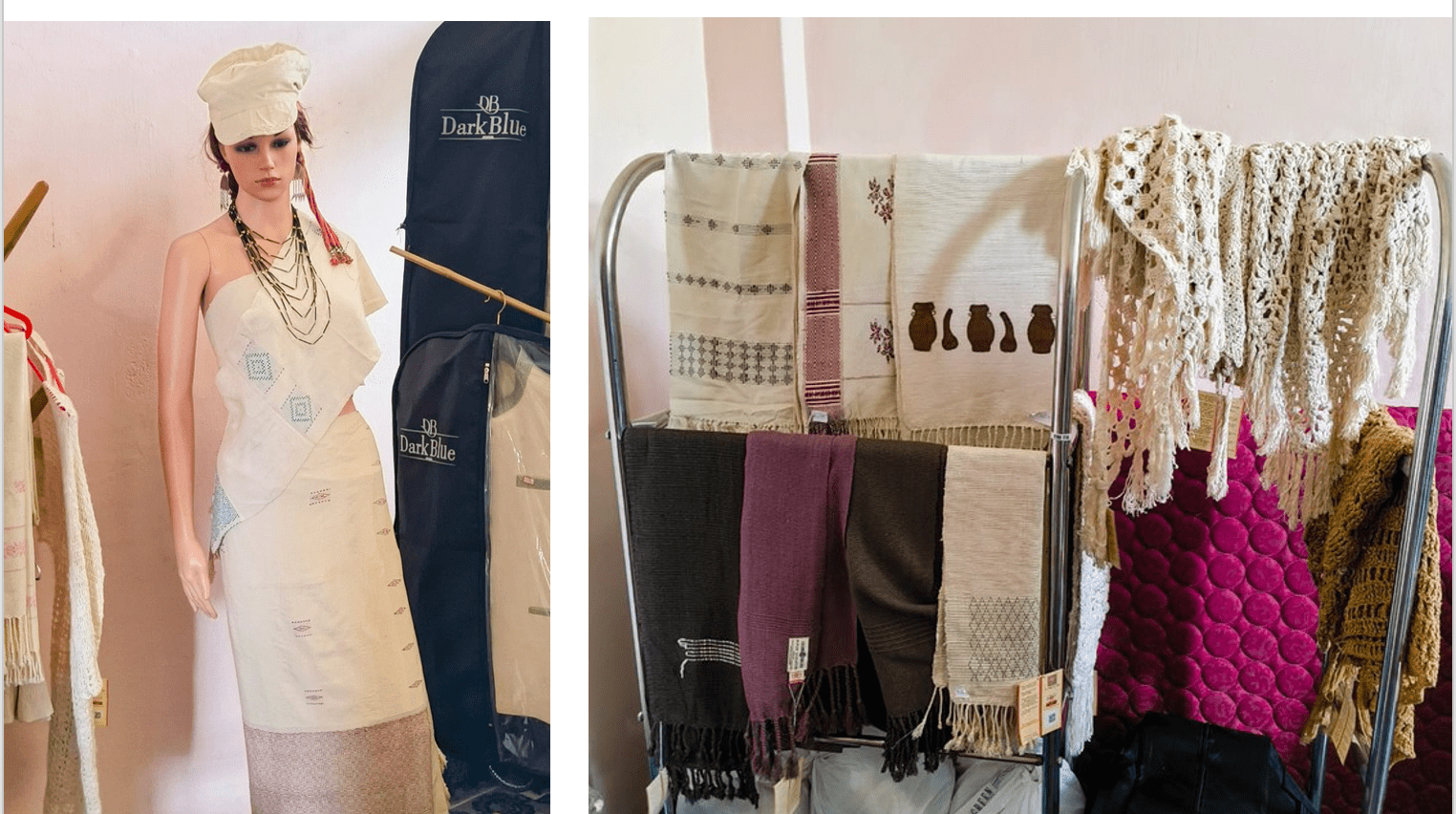
Future of Eri Silk
The future of Eri Silk in Meghalaya holds immense promise. With greater market access and sustained support from the CFC, women artisans are set to present their craft on national platforms, online marketplaces and exhibitions across India. Every sari, stole and shawl they create carries the essence of the Garo Hills, the hues of nature, the spirit of peace and the resilience of its women.
This initiative ensures fair prices and stable livelihoods while safeguarding the cultural heritage woven into each piece. The traditional patterns, natural dyeing techniques and storytelling embedded in the craft will thrive, passing from one generation to the next.
From the heart of the Garo Hills, every thread of Eri Silk is a testament to tradition, hope and progress, a fabric that weaves together the past, present and future of these remarkable women and their communities.
“We want to represent our products and our artisans on a national level.”
– Naiency (Trainer)
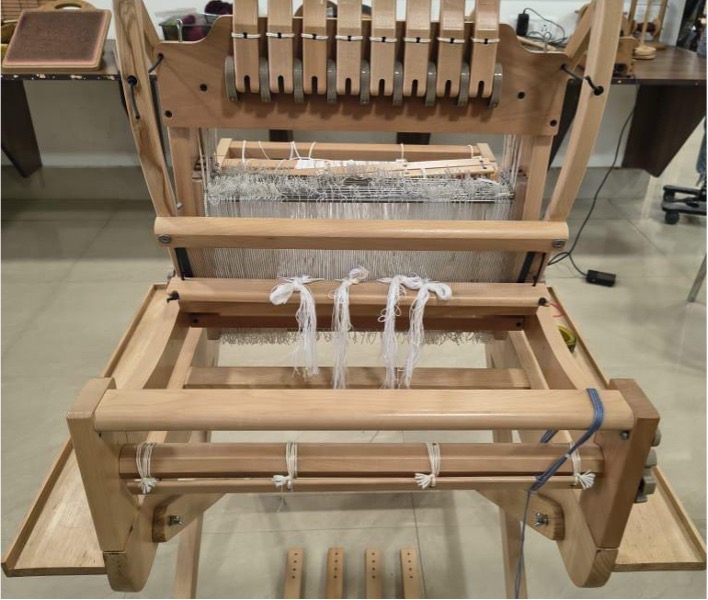
From the hills of Meghalaya’s Garo Hills, each thread of Eri Silk carries the hands, hearts and heritage of its women woven today to keep hope alive for tomorrow
Latest Blogs
Explore perspectives on the work we do and ways to make an even greater impact together.

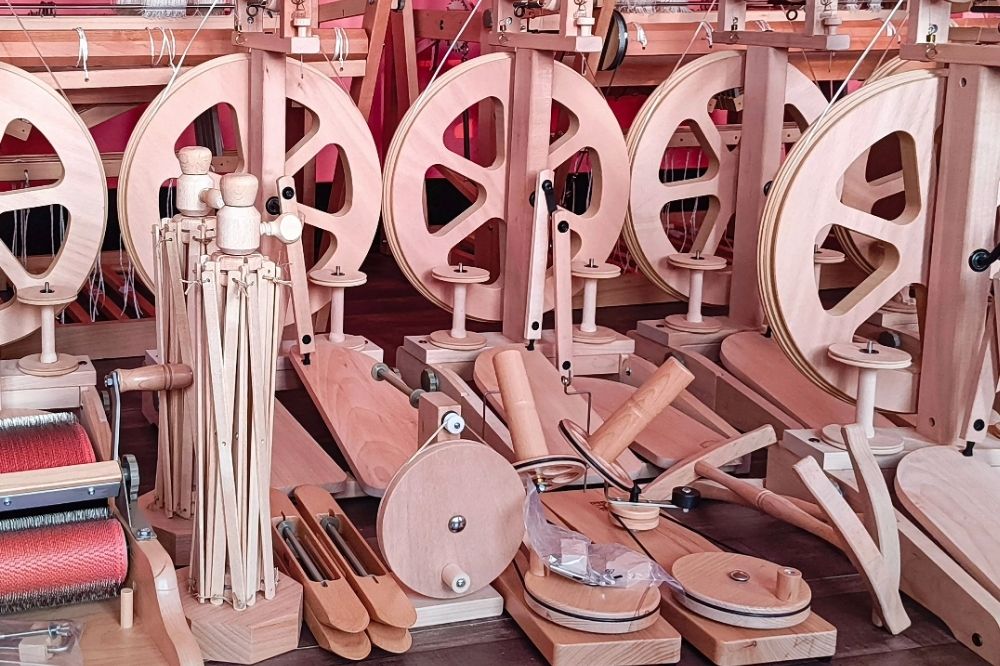
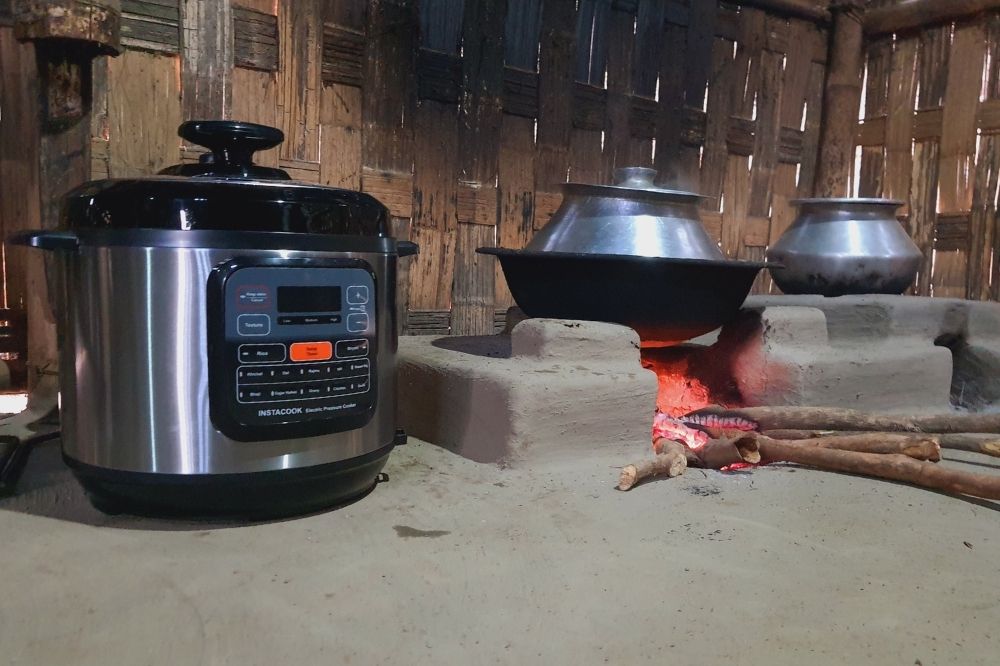
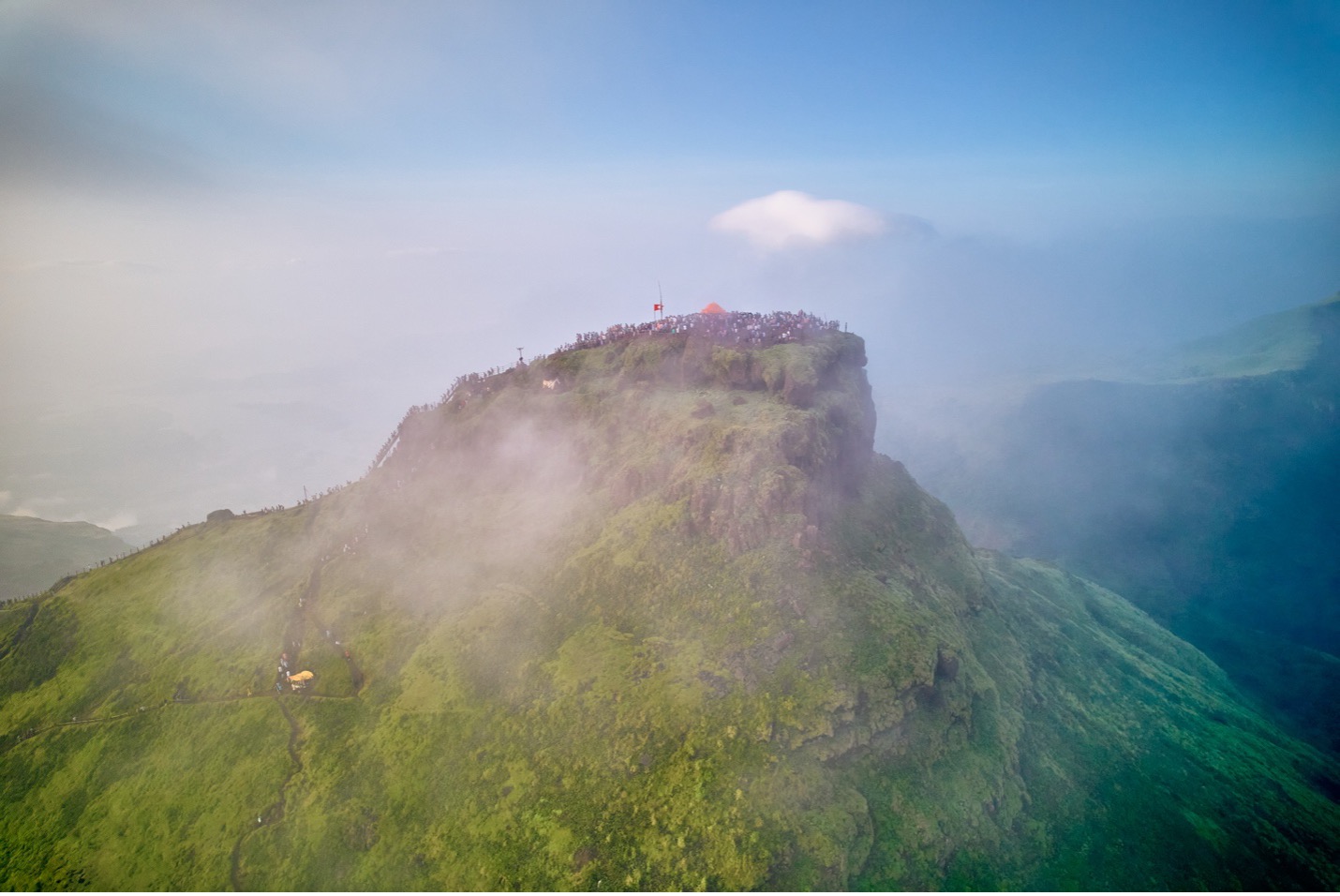



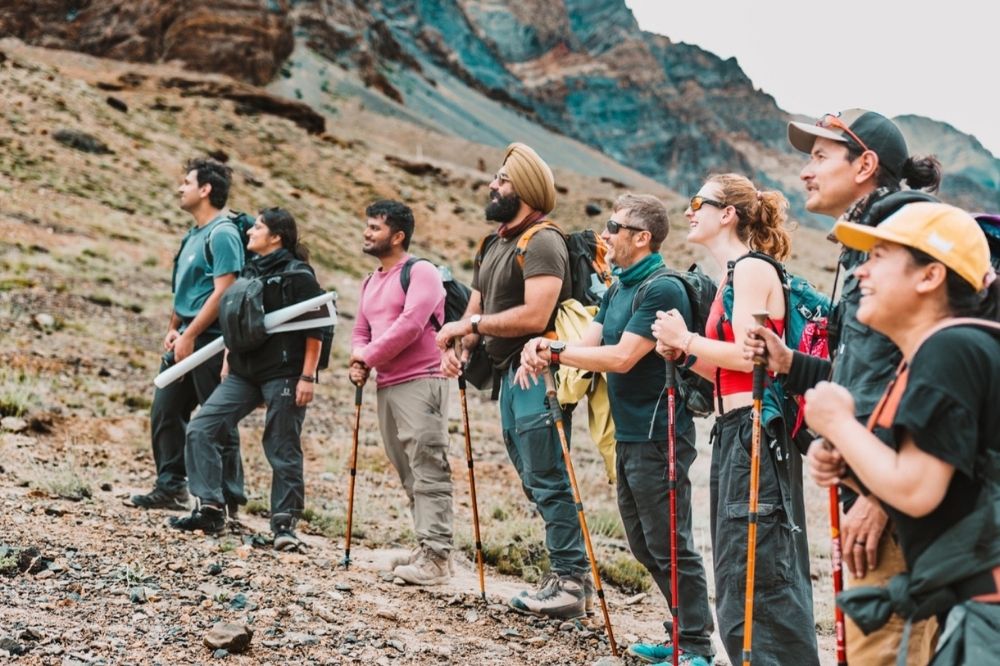

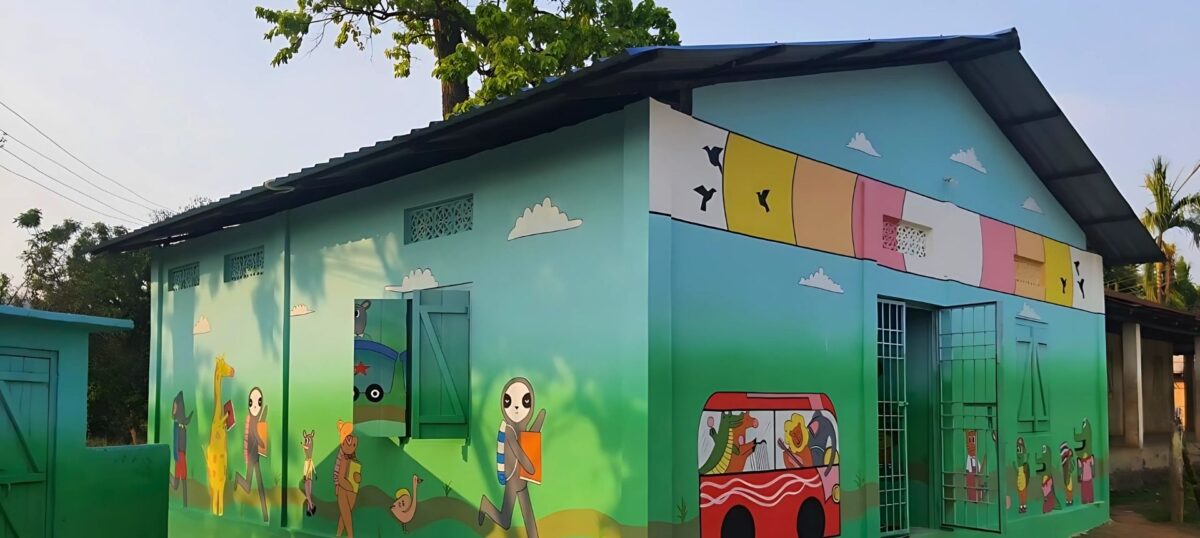



0 Comments